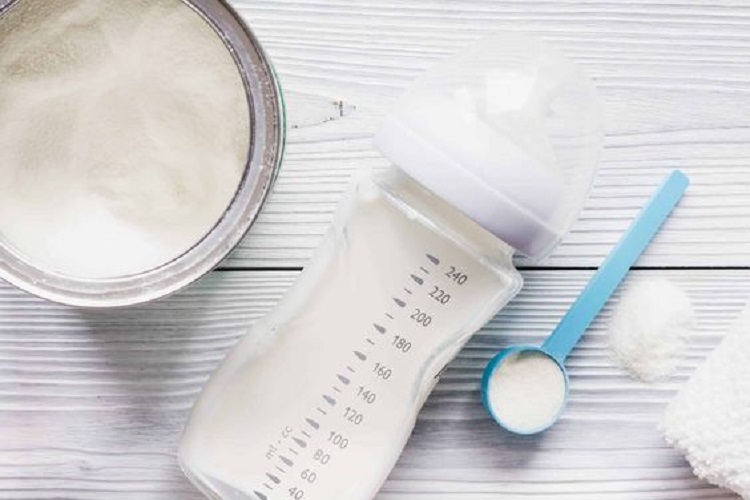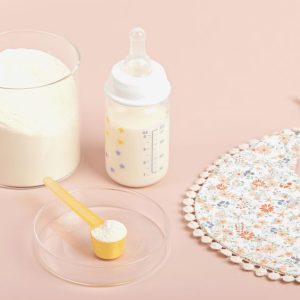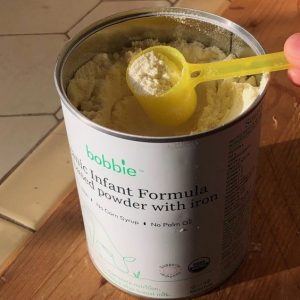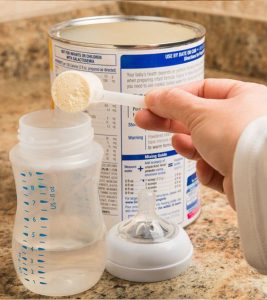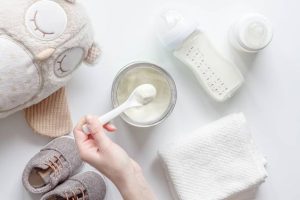Can you freeze formula? Infant formula is a healthy and convenient way to nourish your baby. However, proper handling and storage are crucial to ensure your baby receives the necessary nutrients and avoids potential health risks. This article will explore safe formula preparation and storage practices, with a specific focus on freezing formula.
Understanding Formula Storage Guidelines
Formula manufacturers provide clear instructions on handling and storing their products. Always follow the recommendations on the formula packaging. Here are some general guidelines:
Liquid concentrate:
Store unopened cans or bottles in a cool, dry place. Once opened, follow the specific storage instructions for refrigeration or use within a certain timeframe.
Powdered formula:
Store unopened containers in a cool, dry place. Once opened, keep the container tightly closed and store it in a cool, dry place.
Remember: Never store formula directly in sunlight.
Why Freezing Formula is Not Recommended
While freezing may seem like a convenient way to store extra formula, it can actually compromise the quality and safety of the formula. Here’s why freezing formula is not recommended:
-
Nutrient Loss: Freezing can cause some nutrients in formula to break down. This means your baby might not be getting the full range of essential nutrients they need for healthy development.
-
Separation of Ingredients: Freezing can cause the fat in formula to separate from the other ingredients. This can make it difficult to mix the formula properly, and your baby may not receive a balanced feeding.
-
Growth of Bacteria: Thawed formula can provide a breeding ground for bacteria if not handled properly. This can lead to illness in your baby.
Safe Alternatives to Freezing Formula
If you have extra formula, there are safer alternatives to freezing:
-
Follow the recommended use-by date: Formula typically has a shelf life of several weeks after opening. Check the expiration date on the packaging and plan accordingly.
-
Donate to a local food bank: Many food banks accept unopened formula donations. This is a great way to ensure formula goes to families in need.
-
Talk to your pediatrician: They can advise you on the safest way to store or dispose of any unused formula.
Safe Formula Preparation
Here are some key steps for safe formula preparation:
-
Wash your hands thoroughly: Always wash your hands with warm, soapy water for at least 20 seconds before preparing formula.
-
Sterilize bottles and nipples: Follow the manufacturer’s instructions for sterilizing bottles and nipples, especially for newborns.
-
Use clean, filtered water: Use bottled water or filtered tap water at room temperature to mix the formula. Boiling tap water is not necessary unless specifically directed by your pediatrician.
-
Measure carefully: Use the scoop provided by the formula manufacturer to measure the correct amount of powder. Level off the scoop with a clean knife. Pour the exact amount of water into the bottle as directed on the formula packaging.
-
Mix thoroughly: Cap the bottle and shake it vigorously for at least 30 seconds to ensure the formula is properly mixed.
Important Feeding Tips
Here are some additional tips for safe and effective formula feeding:
-
Test the temperature: Before feeding your baby, place a drop of formula on your wrist to make sure it’s lukewarm. Never microwave formula to warm it up, as this can create hot spots that can burn your baby’s mouth.
-
Never reuse formula: Prepare only the amount of formula your baby will consume at each feeding. Discard any leftover formula.
-
Follow feeding cues: Feed your baby when they show signs of hunger, such as rooting, sucking on their hands, or fussiness. Don’t force your baby to finish the entire bottle.
-
Burp your baby frequently: Burp your baby halfway through and at the end of each feeding to help them release swallowed air.
By following safe formula preparation and storage practices, you can help ensure your baby receives the essential nutrients they need to thrive. While freezing formula may seem like a convenient option, it can negatively impact the quality and safety of the formula. There are safer alternatives for storing or disposing of unused formula. When preparing formula, always follow the manufacturer’s instructions and practice good hygiene.
Safe Storage and Handling of Formula
Infant formula is a vital source of nutrition for babies. Following safe storage and handling practices ensures your baby gets the most out of each feeding and reduces the risk of illness. This section dives deeper into proper formula storage and explores alternatives to freezing.
Formula manufacturers provide clear instructions on handling and storing their products. Always follow the recommendations on the formula packaging. Here’s a quick breakdown of general storage guidelines:
- Liquid concentrate: Store unopened cans or bottles in a cool, dry place. Once opened, follow the specific storage instructions for refrigeration or use within a certain timeframe.
- Powdered formula: Store unopened containers in a cool, dry place. Once opened, keep the container tightly closed and store it in a cool, dry place.
Remember: Never store formula directly in sunlight.
Alternatives to Freezing Formula
While freezing may seem like a way to extend the shelf life of formula, it can affect the quality and safety of the formula. Here are some safe alternatives:
-
Track Formula Expiry Dates: Formula typically has a shelf life of several weeks after opening. Check the expiration date on the packaging and plan your formula use accordingly.
-
Donate to Charity: Many food banks accept unopened formula donations. This is a great way to ensure formula goes to families in need.
-
Consult Your Pediatrician: They can advise you on the safest way to store or dispose of any unused formula.
Safe Practices for Formula Feeding
Here are some additional tips for safe and effective formula feeding:
-
Wash your hands thoroughly: Always wash your hands with warm, soapy water for at least 20 seconds before preparing or feeding formula.
-
Clean and sterilize bottles and nipples: Follow the manufacturer’s instructions for cleaning and sterilizing bottles and nipples, especially for newborns.
-
Measure carefully: Use the scoop provided by the formula manufacturer to measure the correct amount of powder. Level off the scoop with a clean knife. Pour the exact amount of water into the bottle as directed on the formula packaging.
Conclusion
By following safe formula storage and handling practices, you can help ensure your baby receives the essential nutrients they need for healthy development. There are safe and responsible alternatives to freezing formula that can help prevent waste and ensure your baby’s well-being.
